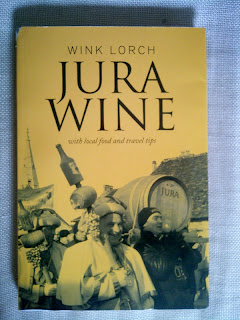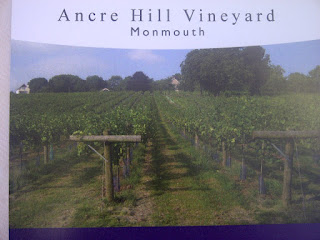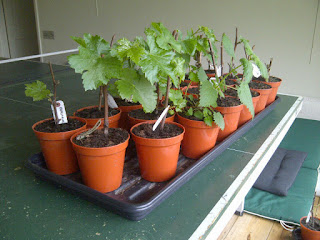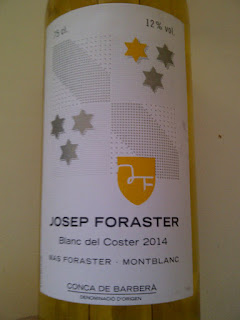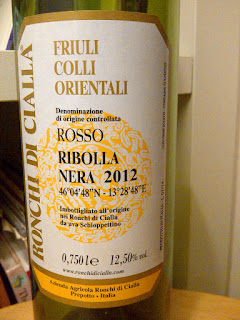 |
| Wink Lorch with Kenjiro Kagami |
First of all Wink gave us a few statistics. There are 2,000 ha. under vine in the Jura of which 300 are organic which is equal to 17%. There are 45 - 50 growers of these organic wines. Jura represents 0.2% of France's total wine production. Cremant du Jura (mainly Chardonnay) accounts for 25% of production of the entire area. Chardonnay is the most planted white variety and Poulsard the most planted red variety with Pinot Noir next. Jura's other signature grapes, Savignin and Trousseau are therefore minority grapes with Trousseau accounting for only 200 ha. Besancon, the capital of Jura is under 100 km from Dijon, the capital of Burgundy and yet the two areas couldn't be more different.Jura is a diversity hotspot despite its tiny size.
Another fascinating fact emerging from this seminar is that Wink doesn't much care for Poulsard. This being so, it seems quixotic to write a book about the Jura. She probably likes it more than the first time she tasted it because she had some positive things to say about the sample offered in this event by Julien Mareschal of Domaine de la Borde. If we may be permitted a personal digression, it is thanks to Poulsard that we came to love Jura wine. Our blind spot is Vin Jaune. Nice enough but not different enough to our degraded palate from some sherries to be worth its price. Poulsard suffers from its salmon pink colour. People sometimes think of it as a Rose but to us it is decidedly a red wine. We love its lightness of being (as opposed to colour), its low alcohol, its aromatic resinous character. In that respect we compare it to another favourite, Pineau d'Aunis.
 |
| M et Mme Kagemi. |
Kenijiro Kagami says 'Wine is a product where nature predominates and humans just help it along'. Wink mentioned that growers such as Kenijiro still live hand-to-mouth despite winning prises and selling out his production, such are the economics of a property like the Domaine des Miroirs. She added that she wished buyers would understand that although Jura wines may be 'in,' with such a relatively tiny production it is no use asking for ever greater quantities and the producers don't want to up the prices and alienate their fans.
Julien Mareschal of Domaine de la Borde, Arbois, is from a farming background and only began growing grapes and making wine in 2003.
 |
| Julien Mareschal, bass player? |
 | |
| Julien Mareschal when not playing his double bass |
His vineyard now covers 5ha. in Arbois-Pupillin, the best region for Poulsard.
 |
| what to expect in a glass of Jura natural wine |
 |
| The bowl a Domaine de la Borde |
Of note is since 2011 is an organization of 38 Jura growers called 'Le nez dans le vert'. They have a get-together at the end of March every year for a tasting and knees-up. This sounds like a great idea.
We wonder if we have to disguise ourselves as Jura growers to get in.
Fortunately Wink Lorch's book has an idea of how to look on the cover.


























